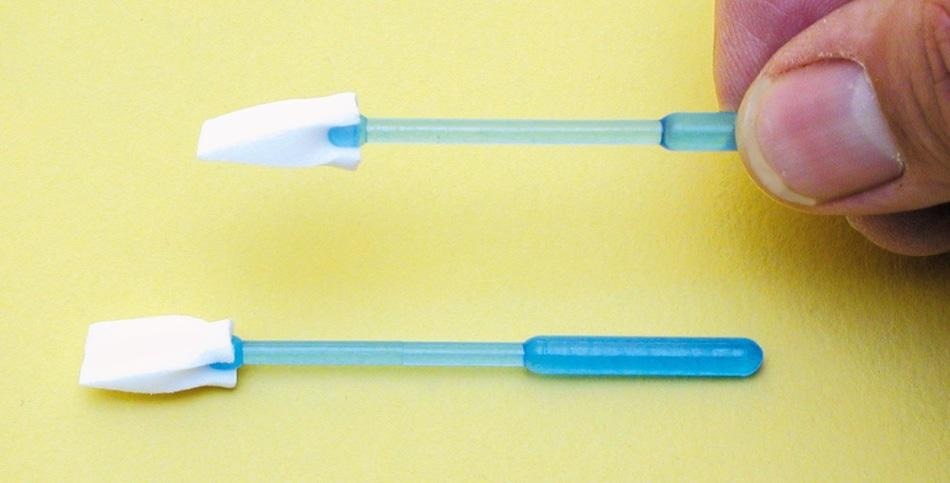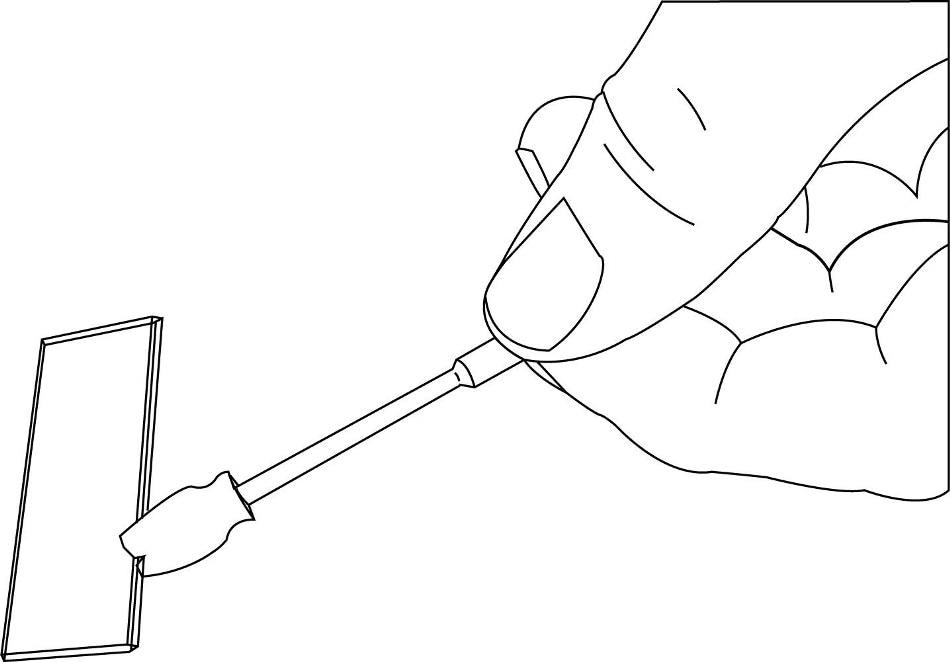The sapphire knife is made of synthetic single crystal sapphire. Because sapphire is very hard and has a regular crystalline structure, a sharp and uniform edge can be created.
Guidelines to Follow
At the same time, this makes the edge very thin and fragile. To ensure that the knife has a long life, it should not be touched with any solid object. The following guidelines should be used:
- When inserting or removing the knife, do not touch the edge.
- The edge should not come in contact with any tools when operating the microtome.
- The blade should be stored safely in the box when not in use.
Clean environments ensure the best sections. The knife can be kept clean by:
- Using clean water, buffer, or reagents in the microtome.
- Rinsing and wiping the microtome reservoir and stage between use.
- Preventing drying of sections on the knife.
Problems Encountered During Sectioning
Problems during sectioning are usually of three types: chatter, compression, and knife marks. Generally, vibratome sectioning using a sapphire knife is done at high amplitude, a slow approach speed, and a knife angle setting of about 23º. It will be helpful to spend some time learning how changes in the operating parameters affect section quality.
Chatter occurs because of vibration during cutting and appears on the sample as thick and thin lines perpendicular to the cut direction. Chatter can be caused by too low a clearance angle, a fast approach, and if the sample is too hard.
Compression is the crushing of a section during cutting, causing the section to be shorter than the original block face and thicker than the microtome setting. Compression can be caused by too high a clearance, a soft specimen, or a dull knife.
Lines on the section parallel to the cut direction are knife marks and are caused by dirty or damaged knife edges.
Diamond Knife Cleaning Tool
Sectioning problems, in particular knife marks, are caused by dirty knives. The Diamond Knife Cleaning Tool, Product No. 122-10, can be used to clean the edge. The PVA spear tip wicks liquids immediately, making the tool safe for cleaning. The spear does not expand in alcohol, so it can be used as it is by immersing in reagent alcohol. Or, it can be dipped in clean water to expand it and then dipped in alcohol, after it has dried and become stiff. The drying time can be decreased by dipping the expanded spear in alcohol.
Steps for cleaning the knife edge:
- The spear should be pre-moistened with clean water and left to dry to obtain the required shape and stiffness.
- The spear is then immersed in reagent alcohol.
- The tip of the spear is gently dragged along the side of the knife, parallel to the edge.
- The process is repeated on the other side of the blade and allowed to air dry.

An alternative method for cleaning is to press the tip of the spear against the knife edge, as though to split the tip. Doing this while viewing the knife under a dissecting microscope will help. The tip should always be wet when doing this by dipping a dried and expanded tip in reagent alcohol. The excess alcohol can be shaken off or blotted on a filter paper.

The spear tip is wiped parallel to the cutting edge using a little force, but never obliquely or at a right angle. After wiping the entire length of the knife edge, it is wiped again in the opposite direction using a different part of the spear.
Contact Ted Pella if these methods do not eliminate the problem.

This information has been sourced, reviewed and adapted from materials provided by Ted Pella, Inc.
For more information on this source, please visit Ted Pella, Inc.